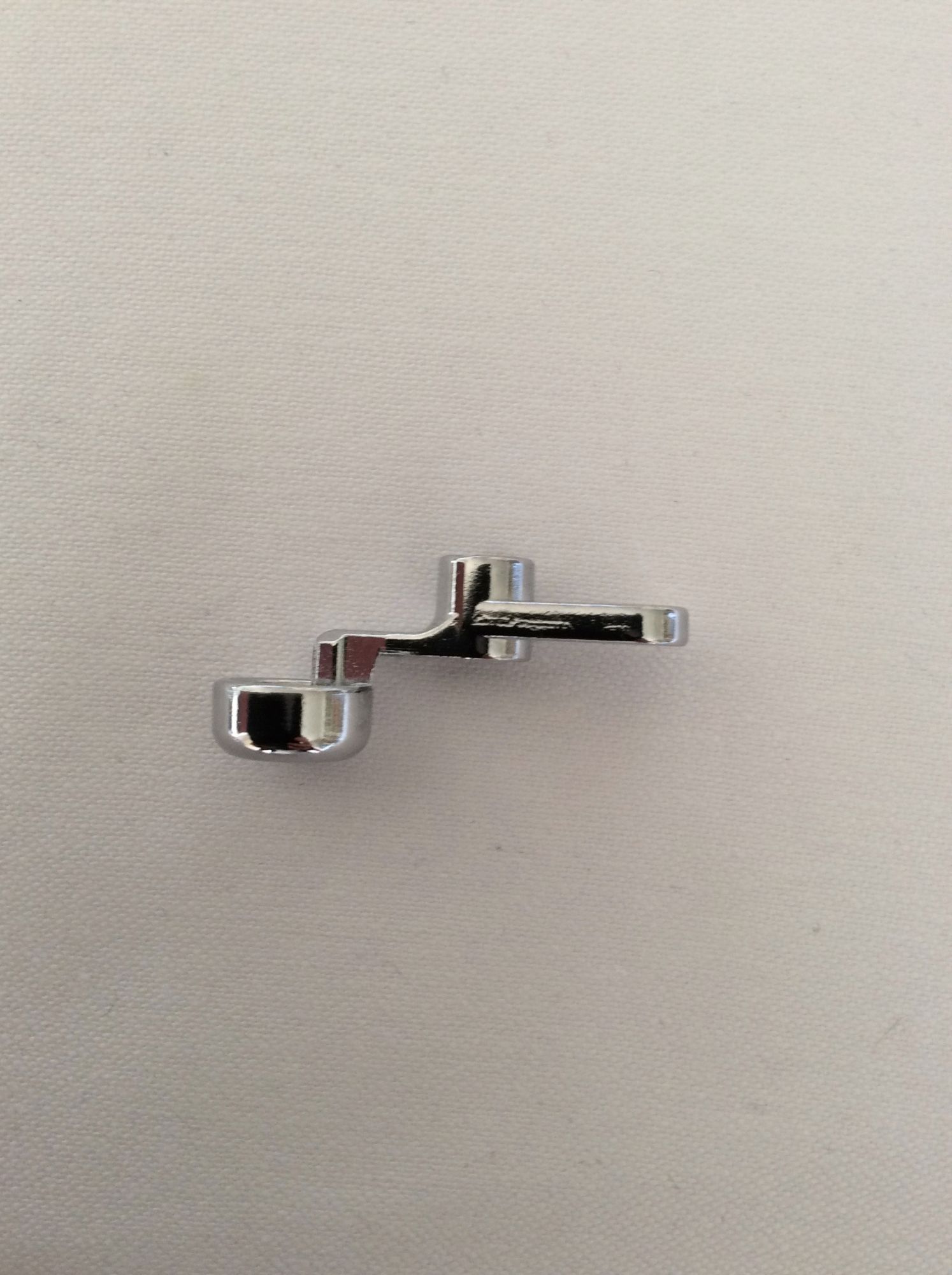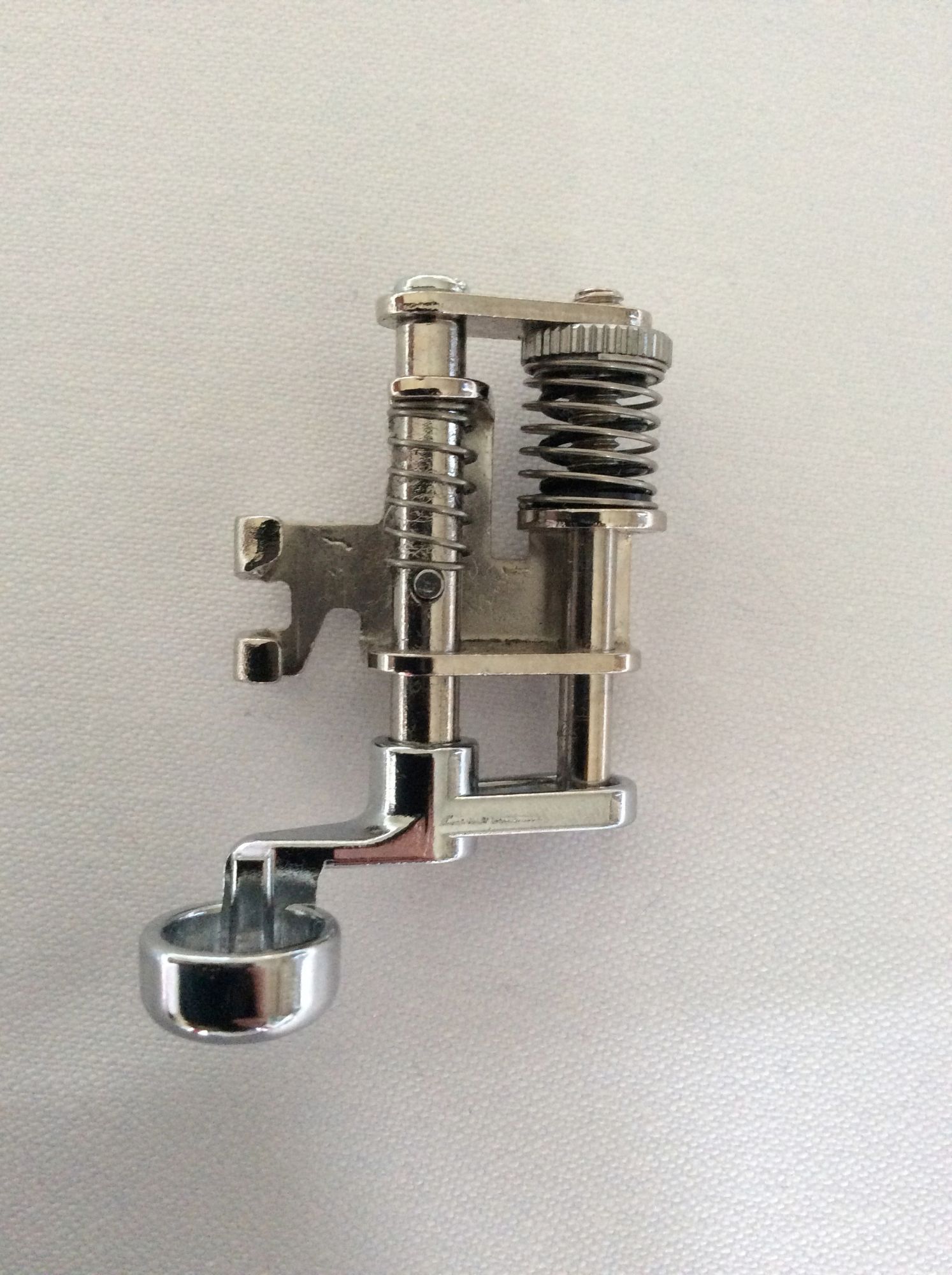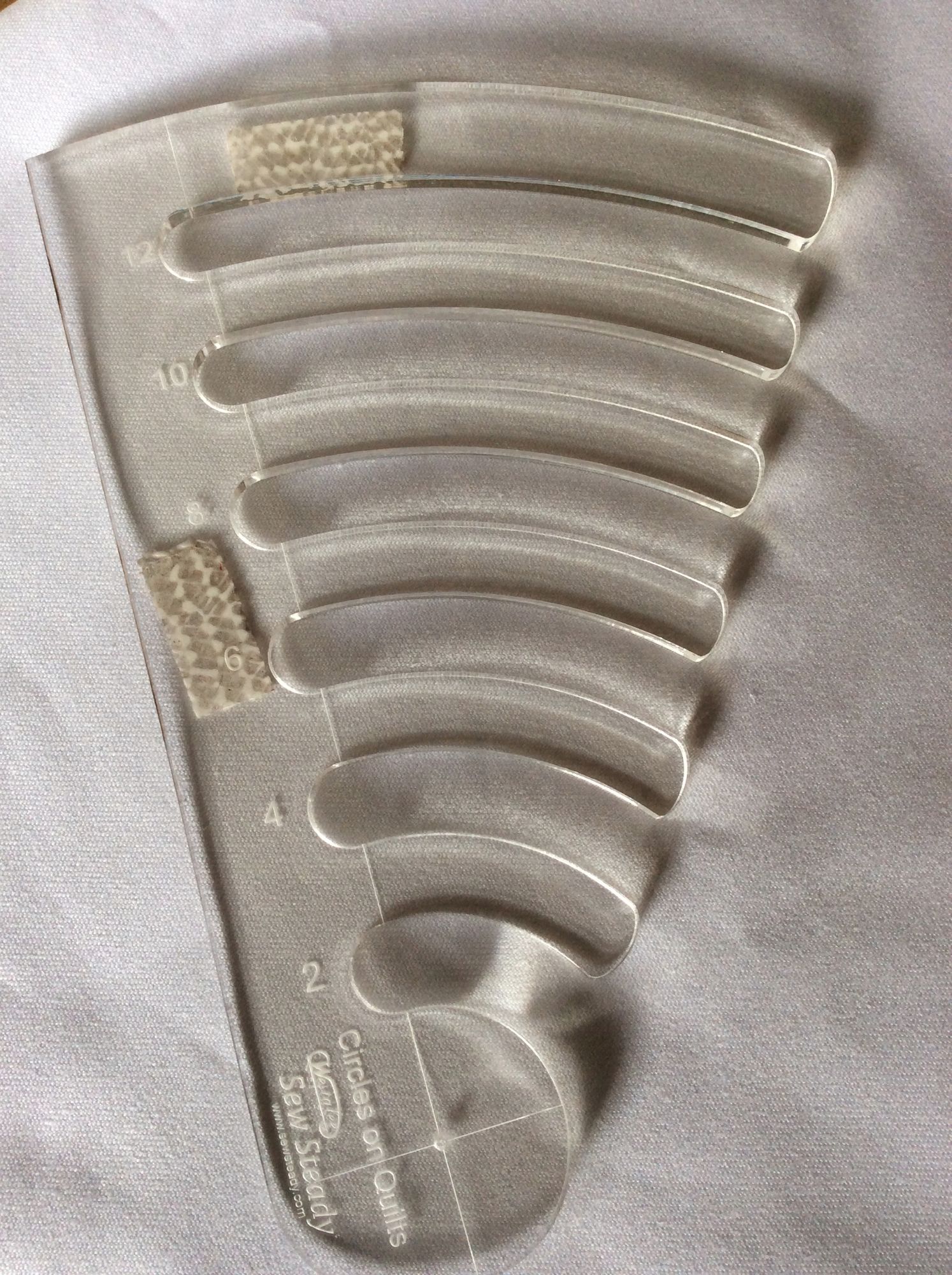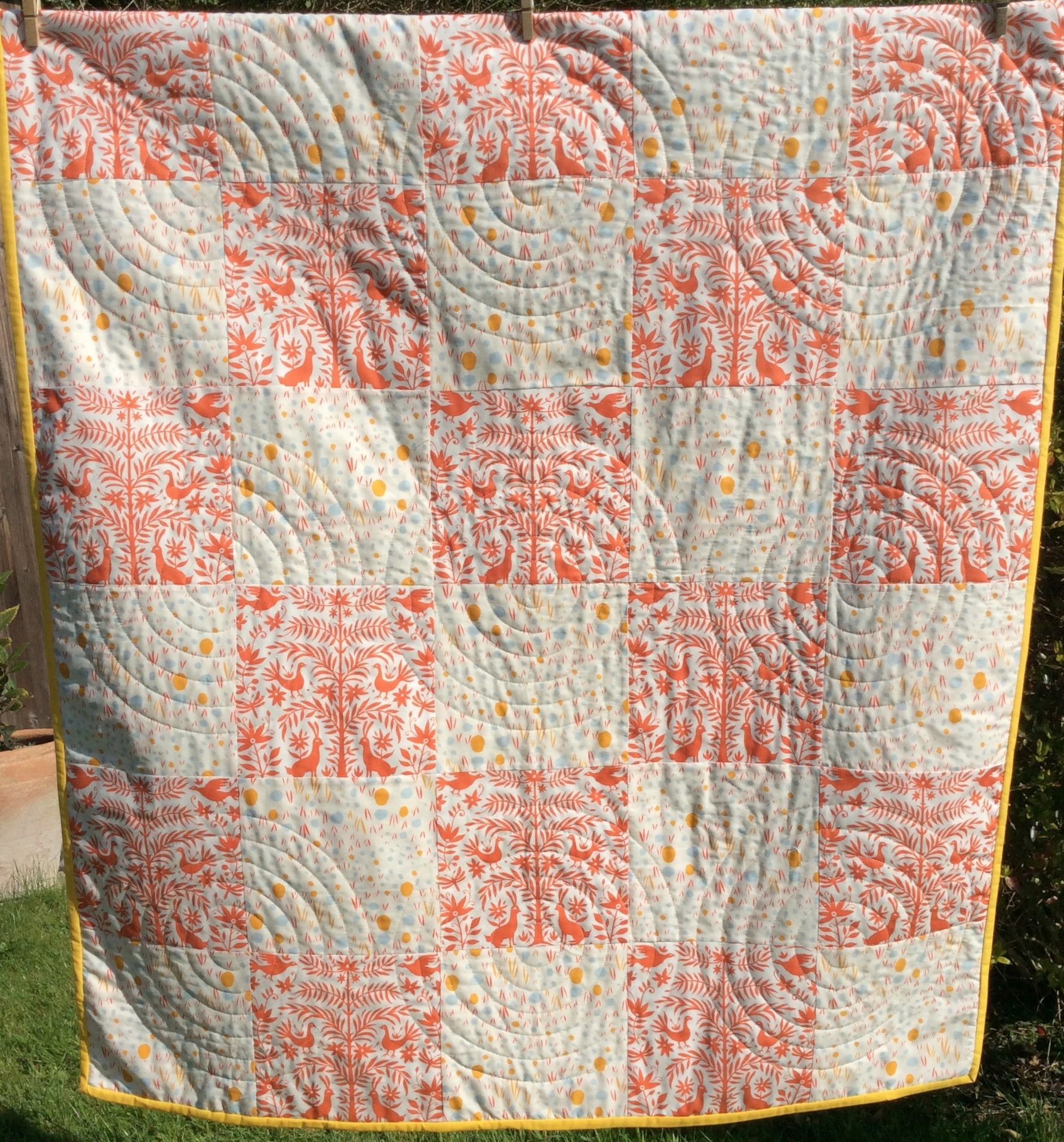More on Free Motion Quilting with a 1/4" Ruler Foot and Templates
Posted on
Since posting my first blog at the beginning of May on Free Motion Quilting using a 1/4" ruler foot and templates, I have taken delivery of a rather wonderful custom-made extra-large extension table to fit my Janome Atelier 5 machine. When I bought the Quilting Accessories Kit for the Atelier 5 it came with an extension table I found that the table works very well with smaller quilting pieces. My new super-duper extra-large extension table works extremely well with larger pieces. When I say it is large, it is large. It measures 24" x 24" or 61 cms x 61 cms. Here is an image of my beauty!
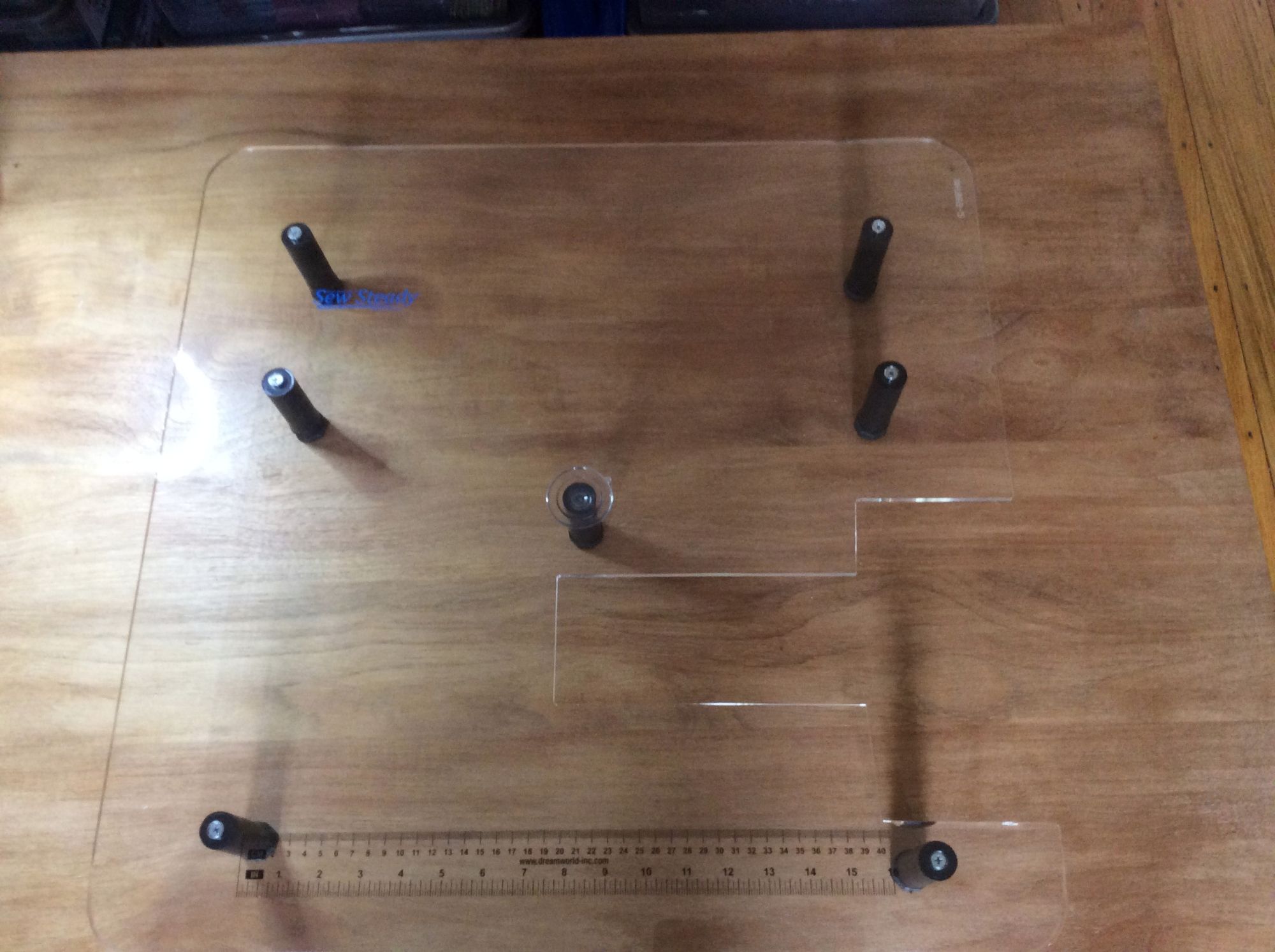
You can see from the image below how much space there is behind the machine:

I've been using (or rather practising) with some templates, mainly the Serpentine, the Clamshell and the 4" Arc
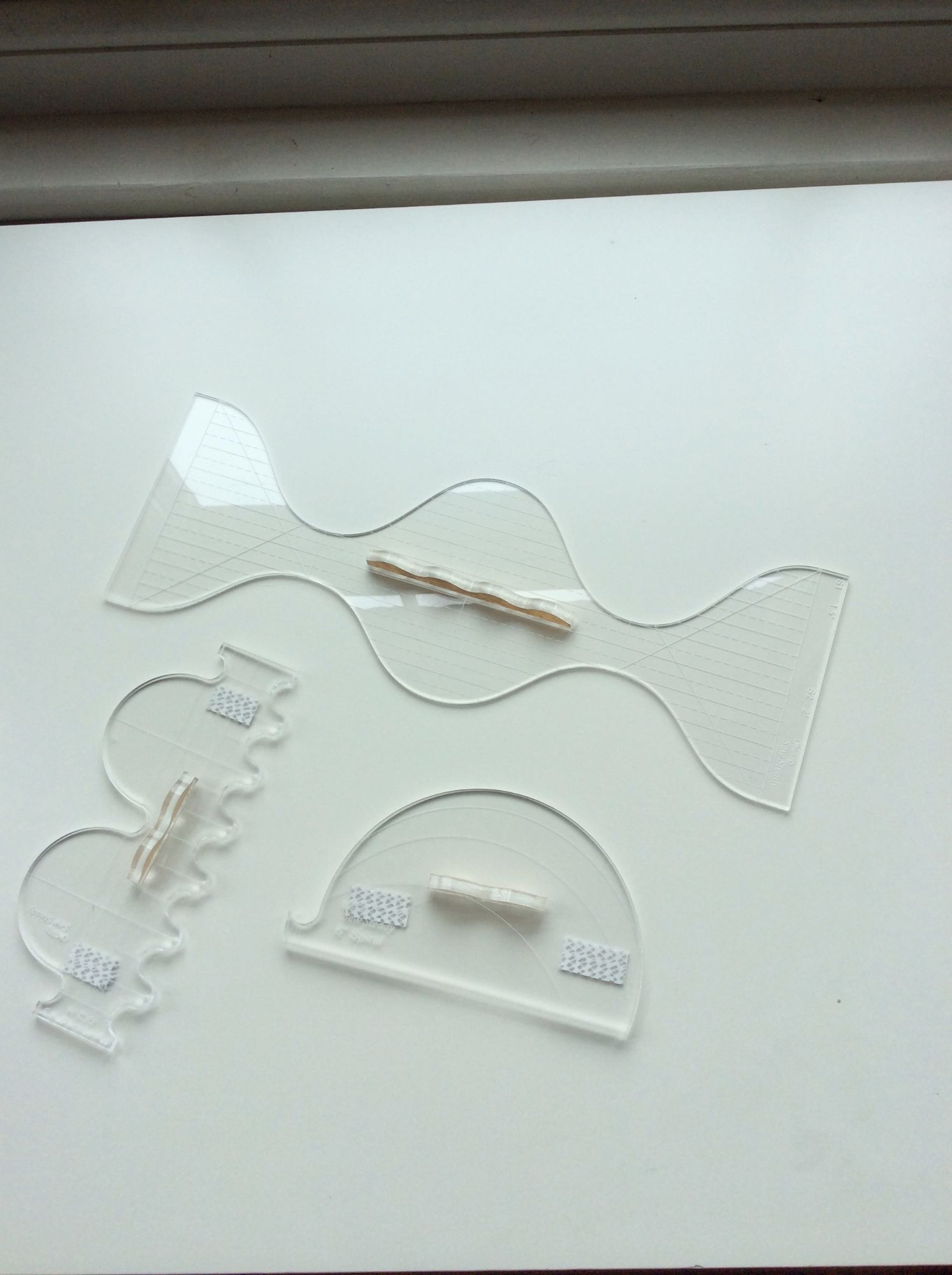
You'll notice that there are handles on the templates above. These need to be bought separately but the good news is that you can adhere the handles anywhere you want to put them on your templates. As a beginner to FMQ with templates I have found the handles really useful and the grip I have is better which also gives me better control when I'm FMQ. This is just personal preference and by no means essential and it may be that with more experience I won't need the handles.
While practising, I have come across an issue which I am working on to overcome and the problem relates to the consistency of my stitches when FMQ. As an example, when I use the Circles template (see below) the first few stitches tend to be too close together and then the remainder of the stitches are fine until I alter the position of the template for the next section and then the same thing happens again - the first few stitches are too close together. I know that the speed setting is fine, neither too fast nor too slow. The issue is more to do with over-exuberance on my part and I am working on this to kerb my enthusiasm and try not to be quite so heavy footed with the pedal!
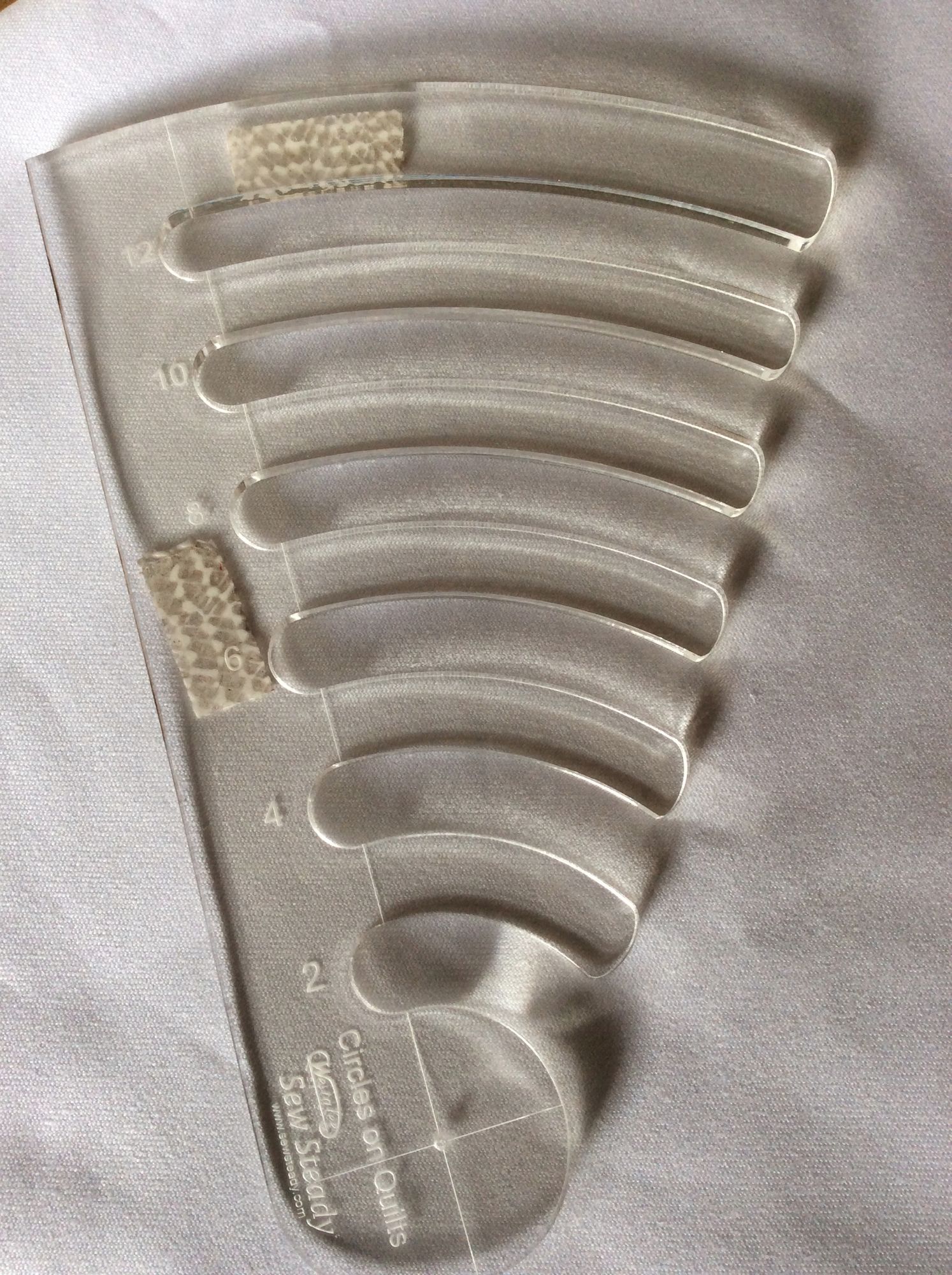
Another issue that has arisen since my last blog on FMQ has to do with the choice of thread being used. I was working on a quilt using FMQ with templates when my machine started to make an alarming banging noise and started to shudder. I stopped sewing immediately. The stitches on the top side of the quilt looked fine. The thread wasn't caught up in the bobbin case. The thread hadn't broken. I looked at the underside of the quilt top and there I found a jumble of thread. As the issue appeared to be something to do with the thread under the quilt I figured the problem was likely to be related with the top thread. I re-threaded the machine. Sewed a few stitches. Everything seemed fine and then the violent banging and shuddering started again. I stopped sewing, checked the underside and once more there was a jumbled mass of threads. I repeated the process two more times and the same thing happened again and again. I changed the needle - twice. I de-fluffed a clean machine. In despair I spoke to someone at my wonderful sewing machine shop where all the staff are incredibly helpful and took the machine in. I was able to replicate the problem. There was a lot of scratching of heads as they couldn't find any mechanical fault with the machine. By a process of elimination we worked out that the thread I was using was too thick for FMQ even though the thread is specifically designed for machine quilting. So should you meet a similar problem, try using a finer thread for the top - it may help. Machine quilting thread can still be used in the bobbin. This only applies when the feed dogs are down. The problem has never occurred when the feed dogs are up.
I now have a list which I refer to before I do any FMQ with templates. Without the list I'm bound to forget something. This is my list:
- Extension table
- 1/4" Ruler foot
- Slip mat
- Special bobbin case (with blue mark)
- Quilting gloves
- Templates
- Finer thread for the top
- Quilt sandwiches to practise on
- Feed dogs down
- RELAX
- Practise, practise, practise
- When finished, replace normal bobbin case
I will post some pictures of completed pieces where I've used FMQ with templates. My practice pieces are very much work in progress.
Happy sewing!

